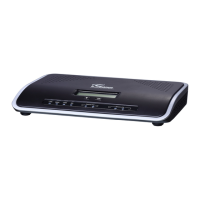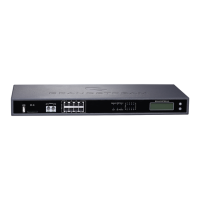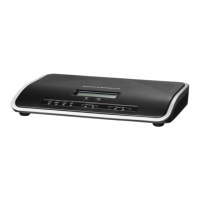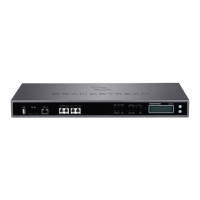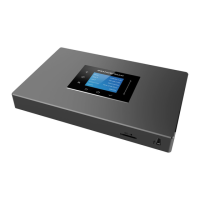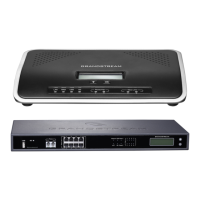CALLBACK
Callback is mainly designed for users who often use their mobile phones to make long distance or international
calls which may have high service charges. The callback feature provides an economic solution for reduce the
cost from this.
The callback feature works as follows:
1. Configure a new callback on the UCM6100.
2. On the UCM6100, configure destination of the inbound route for analog trunk to callback.
3. Save and apply the settings.
4. The user calls the PSTN number of the UCM6100 using the mobile phone, which goes to callback destination
as specified in the inbound route.
5. Once the user hears the ringback tone from the mobile phone, hang up the call on the mobile phone.
6. The UCM6100 will call back the user.
7. The user answers the call.
8. The call will be sent to DISA or IVR which directs the user to dial the destination number.
9. The user will be connected to the destination number.
In this way, the calls are placed and connected through trunks on the UCM6100 instead of to the mobile phone
directly. Therefore, the user will not be charged on mobile phone services for long distance or international calls.
To configure callback on the UCM6100, go to Web GUI→Call Features→Callback page and click on
. Configuration parameters are listed in the following table.
Table 85: Callback Configuration Parameters
Configure the pattern of the callers allowed to use this callback. The caller who
places the inbound call needs to have the CallerID match this pattern so that the
caller can get callback after hanging up the call.
Note:
If leaving as blank, all numbers are allowed to use this callback.
Configure the prepend digits to be added at before dialing the outside number.
The number with prepended digits will be used to match the outbound route. ‘-’
is the connection character which will be ignored.
Configure the destination which the callback will direct the caller to. Two
destinations are available:
• IVR
• DISA
The caller can then enter the desired number to dial out via UCM6100 trunk.
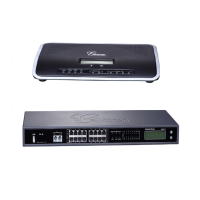
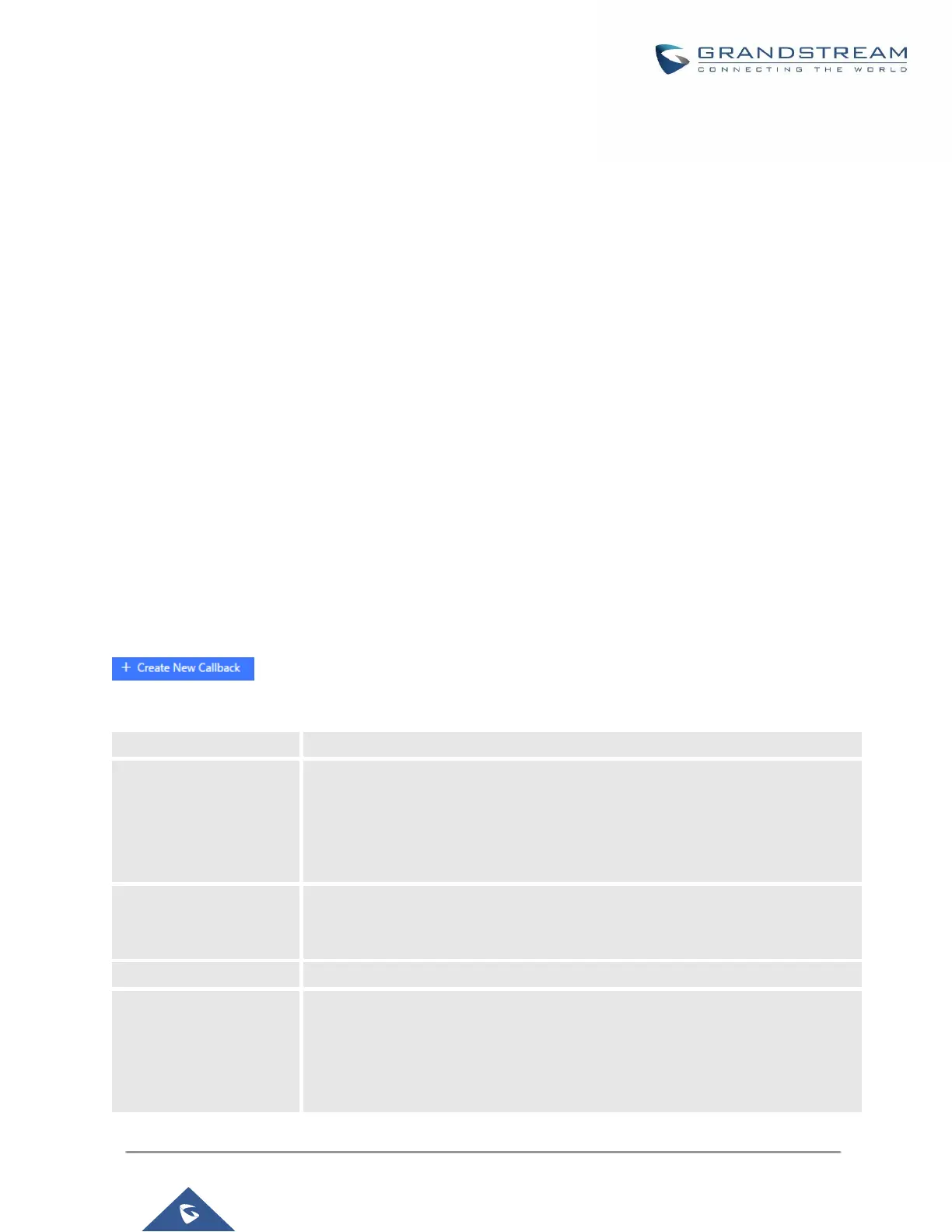